The Asphalt Jungle

Brief Synopsis
Cast & Crew
John Huston
Sterling Hayden
Louis Calhern
Jean Hagen
James Whitmore
Sam Jaffe
Film Details
Technical Specs

Synopsis
When police track hoodlum and ex-convict Dix Handley to a café, Dix's friend, the owner, Gus Minissi, saves him from arrest by hiding his gun. Police Commissioner Hardy reprimands Lt. Ditrich for failing to catch Dix, whom they know has committed the crime, but not realizing that Ditrich is a crooked cop, gives him one more chance by assigning him the task of trailing recently released convict Doc Erwin Reidenshneider. Meanwhile, Doc visits Cobby, a gambling bookie, with a proposition to make half a million dollars in return for a fifty-thousand-dollar loan from Cobby's contact, wealthy but corrupt lawyer Alonzo D. Emmerich.
Later, Doll Conovan, a beautiful but lonely waitress, visits Dix and asks if she can stay with him for a few days, and Dix brusquely agrees. That night, Doc impresses Emmerich with his plan for a massive jewelry store robbery, and after closing the bargain by offering to act as both backer and bagman, Emmerich runs to his mistress, the young and gorgeous Angela Phinlay. The next morning before he leaves to meet Cobby, Dix talks with Doll about his past on his family's Kentucky farm and how much he longs to go back. At Cobby's, he meets Doc, who has heard that Emmerich has gone bankrupt spending all his money on Angela. At the same time, Emmerich admits to his private detective, Bob Brannom, that he is broke, prompting them to plan together to swindle Doc out of the stolen jewels. Emmerich asks Cobby to advance him the fifty thousand dollars, and on the night of the crime, manages to pull himself away from his lonely wife May to meet Brannom. Meanwhile, Doc, Dix, safe cracker Louis Ciavelli and driver Gus rob the store expertly, but when a watchman happens by, Dix hits him and fires his gun accidentally, wounding Louis. Gus, afraid to take Louis to a doctor, delivers him to his home, where his wife Maria cries helplessly watching him die.
Dix and Doc go to Emmerich's as planned and realize he is trying to cheat them when Brannom pulls out his gun. Brannom and Dix end up shooting each other, and as Brannom dies, Doc advises a terrified Emmerich to ask the insurance company to pay for the return of the jewels, no questions asked, or else Dix will kill him. Soon after, Emmerich dumps Brannom in the river, and Dix and Doc escape to Doll's new apartment, where Dix refuses to see a doctor, though he is bleeding. Soon, the police find Brannom's body with a piece of Emmerich's stationery in his pocket, and though Emmerich uses Angela as his alibi, his story is quickly destroyed when a taxi driver tells Hardy that he once dropped Doc off at Cobby's, and Cobby confesses the whole scheme. Hardy then pushes a willing Angela to tell the truth about Emmerich, who immediately shoots himself. After Doc hears about the suicide, he says goodbye to Dix and leaves town. By lingering at a café outside of the city in order to leer at a young girl dancing, however, Doc gives the police just enough time to catch him. Meanwhile, the weakening Dix agrees to let Doll escape with him to Kentucky, barely making it to his family farm. As he dies in the pasture, Hardy speaks to the press about the pervasiveness of crime in the urban jungle.

Director

John Huston
Cast

Sterling Hayden

Louis Calhern
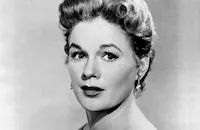
Jean Hagen

James Whitmore

Sam Jaffe
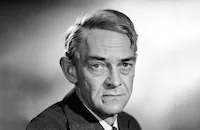
John Mcintire
Marc Lawrence
Barry Kelley

Anthony Caruso
Teresa Celli

Marilyn Monroe
William Davis

Dorothy Tree

Brad Dexter
John Maxwell
Alex Gerry
Thomas Browne Henry
James Seay
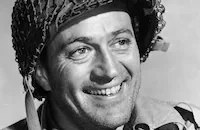
Don Haggerty
Henry Rowland
Helene Stanley
Raymond Roe
Chuck Courtney
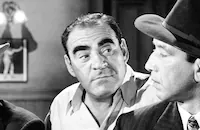
Ralph Dunn
Pat Flaherty
Tim Ryan
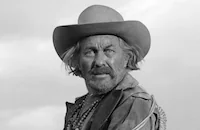
Strother Martin
Henry Corden
Frank Cady
Jack Shea
Benny Burt
Fred Graham
David Hydes
Saul Gorss
John Cliff
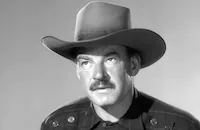
Ray Teal

Gene Evans
Wesley Hopper
Jack Stoney
Joseph Darr Smith
Fred Marlowe

Harlan Warde
John Crawford
William Washington
Leah Wakefield
Judith Wood
Eloise Hardt

Patricia Miller
Albert Morin
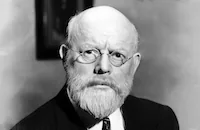
Howard Mitchell
Ray Bennett
George Lynn
David Bond
Ralph Montgomery
William Haade
Jeff York
David Clarke
Charles Sherlock
J. Lewis Smith
Harry Cody
Mack Chandler
J. J. Smith
Harry G. Butcher

Mary Anderson
Ethel Lyons
Jean Carter
Wilson Wood
Constance Weiler
Kerry O'day
Crew
John Banse
George Boemler
Jack Dawn
Randall Duell
Cedric Gibbons
Jack Greenwood
Sydney Guilaroff
Arthur Hornblow Jr.
John Huston
Lloyd Isabell
Lee Katz
P. R. Keeler
Otto Kottke
Lew Lacava
Robert B. Lee
Ben Maddow
S. C. Manatt
Robert Martin
Andy Mcintyre
Jack D. Moore
Frank Myers
Elaine Ramsey
Harold Rosson
Miklos Rozsa
Douglas Shearer
Edwin B. Willis

Photo Collections
Videos
Movie Clip







Trailer
Hosted Intro
Promo
Film Details
Technical Specs

Award Nominations
Best Cinematography
Best Director
Best Supporting Actor
Best Writing, Screenplay
Articles
The Essentials - The Asphalt Jungle
A stylish, corrupt lawyer, Alonzo D. Emmerich, puts his money up for an elaborate jewel heist, hatched by criminal mastermind Doc Riedenschneider and executed by a crew of career thieves, made up of Dix Handley, Gus Ninissi, and Louis Ciavelli. But the meticulous planning for the heist begins to unravel, causing the den of thieves to spiral towards its ultimate fate.
Producer: Arthur Hornblow, Jr.
Director: John Huston
Screenplay: Ben Maddow, John Huston, from the novel by W. R. Burnett
Cinematography: Harold Rosson
Film Editing: George Boemler
Art Direction: Cedric Gibbons, Randall Duell
Music: Miklos Rozsa
Cast: Sterling Hayden (Dix Handley), Louis Calhern (Alonzo D. Emmerich), Jean Hagen (Doll Conovan), James Whitmore (Gus Minissi), Sam Jaffe (Doc Riedenschneider), John McIntire (Police Commissioner Hardy), Marc Lawrence (Cobby), Anthony Caruso (Louis Ciavelli), Marilyn Monroe (Angela Phinlay), Brad Dexter (Bob Brannom), Dorothy Tree (May Emmerich).
BW-113m. Closed captioning. Descriptive Video.
Why THE ASPHALT JUNGLE is Essential:
The Asphalt Jungle is a different kind of film noir from John Huston, director of The Maltese Falcon (1941) and Key Largo (1948), two key entries from the heyday of the classic noir period. Instead of the cramped, claustrophobic settings of The Maltese Falcon and Key Largo, Huston adopts an open, smooth, and uncluttered style of framing. This is an ironic gesture, since other films noir, such as The Stranger on the Third Floor (1940) and the later Killer's Kiss (1955), are oppressive and threatening. But the city is more than an incidental setting of the plot. It is a crucial element to the story, one that influences the story, the characters, and how we respond as viewers. Huston understood that the city was, in a sense, the most important character in the film.
The Asphalt Jungle was also different in that the criminal element is given human dimensions. Huston not only creates sympathy for the gang, but he shows respect for the way they do their jobs. Furthermore, instead of painting them as soulless, murderous brutes, Huston imbues them with human weaknesses, frailties, and certain aspects of humanity that viewers at the time would not expect in a movie about criminals. Gone are the uncomplicated, unethical killers like Tom Powers (James Cagney) of The Public Enemy (1931) and Tony Camonte (Paul Muni) of Scarface (1932). The hoods in The Asphalt Jungle are family men, proud professionals who perform their crimes with proud precision, and essentially good men who happen to steal things. This is a far cry from the psychotic Cody Jarrett (James Cagney) in the previous year's White Heat (1949). Additionally, the women in The Asphalt Jungle are not femme fatales, dangerous females that the male protagonists of film noir should usually avoid like a bad habit. Rather, it is the man's obsession with women that causes his downfall.
"Although MGM did not tamper with it, The Asphalt Jungle was criticized for its liberal attitude toward the underworld," wrote film scholar Carlos Clarens in Crime Movies: An Illustrated History. "In Huston's word: 'My defense...was that unless we understand the criminal...there's no way of coping with him.' This is a proposition that Huston conveyed , at its simplest, by having the straights misconstrue the hoods, their dark-mirror images. 'When I think of all those awful people you come in contact with, downright criminals, I get scared,' says the lawyer's crippled wife (Dorothy Tree); to which her husband replies, 'There's nothing so different about them.'
Today, The Asphalt Jungle is regarded by film historians and critics as a seminal movie in the film noir genre and its style and storyline were imitated repeatedly in a string of crime thrillers that followed in its wake. Among the remakes it spawned are The Badlanders (1950), a Western starring Alan Ladd, Cairo (1962) with George Sanders and Cool Breeze (1972), a 'blaxploitation' version featuring Thalmus Rasulala. More importantly, The Asphalt Jungle garnered three Oscar nominations - for Best Director, Best Screenplay and Best Cinematography - and gave Marilyn Monroe one of her first significant roles as the naive mistress of Louis Calhern's crooked lawyer.
by Scott McGee

The Essentials - The Asphalt Jungle
Pop Culture 101 - The Asphalt Jungle
The menacing urban environment inspired other filmmakers to actually set and shoot their tough little melodramas outside the controlled environment of the studio set. T he creators behind films like Killer's Kiss (1955), and The Phenix City Story (1955) opted for the city or on-location shooting because it was cheaper than studio shooting and the reality of on-location lent an immediacy to the story being told. Ironically, without having been shot in a real city, The Asphalt Jungle showed how city street realism could make a film noir narrative come alive with a pervasive sense of menace. The Asphalt Jungle has influenced a number of films about elaborately planned heists, like The Killing (1957), also starring Sterling Hayden in a very similar role. Others include Ocean's 11 (1960), Dog Day Afternoon (1975), Reservoir Dogs (1992), Heat (1997), and more recently, The Score (2001) and Heist (2001).
Another debtor, The Usual Suspects (1995), even alludes to the line of dialogue about crime being a left-handed form of human endeavor. So far, there have been three remakes of The Asphalt Jungle: The Badlanders (1958), Cairo (1963), and Cool Breeze (1972).
The Asphalt Jungle was not the first W.R. Burnett novel John Huston adapted for the screen. In 1941, Huston wrote the screenplay for High Sierra, an adaptation of a Burnett novel and starring Ida Lupino and Humphrey Bogart.
by Scott McGee
Pop Culture 101 - The Asphalt Jungle
Trivia - The Asphalt Jungle - Trivia & Fun Facts About THE ASPHALT JUNGLE
One of John Huston's long-time racetrack friends, Benny Burt, was cast in a bit part as a stool pigeon.
Photography for The Asphalt Jungle was by Harold "Hal" Rosson, who happened to be MGM star Jean Harlow's last husband. The Asphalt Jungle was labeled "A John Huston Film," the first time Huston received such prestigious billing in his long career. John Huston filmed the robbery sequence with the on-set advice of safecracking experts in order to ensure authenticity.
John McIntire, who plays Police Commissioner Hardy in The Asphalt Jungle, played another important law officer ten years later. In director Alfred Hitchcock's Psycho (1960), McIntire played Sheriff Chambers, who investigates the strange goings-on at the Bates Motel.
Memorable Quotes from THE ASPHALT JUNGLE
Alonzo D. Emmerich: There's nothing so different about them. After all, crime, my dear, is merely a left-handed form of human endeavor.
Doc Erwin Riedenschneider: Put in hours and hours of planning. Figure everything down to the last detail. Then what? Burglar alarms start going off all over the place for no sensible reason. A gun fires of its own accord and a man is shot. And a broken down old cop, no good for anything but chasing kids, has to trip over us. Blind accident. What can you do against blind accidents?
Doc Erwin Riedenschneider: Hooligans - they're just like left-handed pitchers, all have a screw loose somewhere.
Doc Erwin Riedenschneider: One way or another we all pay for our vices.
Angela Phinlay: What about my trip, Uncle Lon?
Alonzo D. Emmerich: Don't worry, baby, you'll have plenty of trips.
Dr. Swanson: He hasn't got enough blood left in him to keep a chicken alive.
Police Commissioner Hardy: People are being cheated, robbed, murdered, raped. And that goes on 24 hours a day, every day in the year. And that's not exceptional, that's usual. It's the same in every city in the modern world. But suppose we had no police force, good or bad. Suppose we had... just silence. Nobody to listen, nobody to answer. The battle's finished. The jungle wins. The predatory beasts take over.
Cobby: Here's to the drink habit. It's the only one I got that don't get me into trouble.
Doc Riedenschneider: One way or another, we all work for our vice.
Dix Handley: Why don't you quit cryin' and get me some bourbon?
by Scott McGee
Trivia - The Asphalt Jungle - Trivia & Fun Facts About THE ASPHALT JUNGLE
The Big Idea - The Asphalt Jungle
Huston earned a reprieve when star Gregory Peck suffered an eye infection and forced the production into a prolonged postponement. To keep Huston occupied while Peck's infirmity cleared up, Schary assigned the director to The Asphalt Jungle, although Huston remembers his initial approach to the project quite differently. As he claims in his autobiography, he was not assigned to it, but rather asked to do The Asphalt Jungle. Huston's rebellious and stubborn reputation makes his version of the story more credulous.
Huston never did go back to Quo Vadis (1951), nor did Peck, Taylor, or Walter Huston. The Roman epic was eventually directed by Mervyn LeRoy, starring Robert Taylor, Deborah Kerr, and Peter Ustinov.
by Scott McGee
The Big Idea - The Asphalt Jungle
Behind the Camera - The Asphalt Jungle
For the lead role of Dix Handley, Huston chose Sterling Hayden, whom the director met in Washington, D.C. during a protest against the House of Un- American Activities Committee investigation. When the pair met to discuss the project, Huston said to Hayden, "I've admired you for a long time, Sterling. They don't know what to make of a guy like you in this business." Huston was honest with Hayden about his chance for the lead role in The Asphalt Jungle. Hayden recounts in his biography Huston's pitch: "Now, Sterling, I want you to do this part. The studio does not. They want a top name star. They say you mean nothing when it comes to box office draw-I told them there aren't five names in this town (that) mean a damn thing at the box office. Fortunately, they're not making this picture. I am. Now let me tell you about Dix Handley....Dix is you and me and every other man who can't fit into the groove." Rumored to be fighting severe alcohol and psychiatric problems, Hayden landed Dix Handley, his first major starring role, over the objection of MGM executive Dore Schary. Hayden's gritty performance proved many Hollywood naysayers flat wrong. For instance, Hayden himself was nervous about the climactic scene in the picture, when Dix breaks down in tears in front of Jean Hagen. According to the director though, Hayden did not have anything to worry about. After the actor delivered the scene beautifully, Huston took Hayden aside and said, "The next time somebody says you can't act, tell them to call Huston."
Marilyn Monroe was a bit actress under contract to Fox and had not yet had a s peaking role; Fox eventually dropped her contract. At least two versions exist as to how Monroe came to be cast in MGM's production of The Asphalt Jungle. One version has an employee of MGM's talent department suggesting that John Huston try out Monroe for the part of Louis Calhern's mistress, with Huston immediately recognizing her as perfect for the role after her sensual audition. But another version, as supported by MGM archives, has Monroe as a "dark horse" contender for the role. Huston had reportedly already chosen a blond actress named Lola Albright for the role. When a very nervous Monroe auditioned for the part, Huston was not impressed. But Albright had recently found success with a supporting role in Champion (1949), so it was unlikely she would accept a small role in the crime melodrama. Huston tested eight other starlets, but Monroe stayed in the running, mainly because of the persistence of MGM talent director, Lucille Ryman Carroll. Huston remained adamant that Monroe wouldn't fit the bill, until Carroll prevailed by taking advantage of an ironic coincidence.
It turned out that Huston, an avid horseman, had a team of Irish stallions boarded and trained at Carroll's ranch, and he happened to be $18,000 in arrears for payments to the ranch. On a Sunday afternoon in September, Carroll and her husband invited Huston out to the ranch and made him an offer he couldn't refuse, to borrow a line from another movie. Carroll informed Huston that if he did not allow Monroe another shot at the role, the ranch would sell his stallions and collect the money due. Huston did n ot refuse the terms, and Monroe got another screen test, only this time, she had the support of MGM chief Louis B. Mayer and MGM hair stylist Sidney Guilaroff. Monroe got the small role, of which she would eventually regard as one of her best performances, particularly the last scene with Calhern. When Fox chief Darryl F. Zanuck saw The Asphalt Jungle, he again assumed her contract.
The censors had a conniption over Louis Calhern's suicide as written in the o riginal script. In the rejected scene, Calhern was to write a short, moving letter to his wife, then take a pistol out of his desk and do the deed. While suicide was a top no-no on the list of forbidden acts, what made the scene more objectionable to the censors was the fact that Calhern's character was apparently in his right mind. They reasoned that no man in his right mind would commit suicide. According to John Huston, the rewritten suicide in the final film ironically made for a much better scene. During the production of The Asphalt Jungle, Walter Huston came to Hollywood for his son John's forty-fourth birthday party. Two days later, with John at his side, the legendary actor of stage and screen, died of heart failure at the age of sixty-six.
When The Asphalt Jungle was being prepared for a British bow, the producers hesitated because the film was so full of American slang. At the time, films heavy with slang were usually redubbed for English audiences. Gerard Fairlie, the British author of the Bulldog Drummond adventure stories, was called upon as a consultant, and he advised against redubbing, even though some words would go right over the heads of British viewers. The film was not redubbed and earned boffo box-office in England.
by Scott McGee
Behind the Camera - The Asphalt Jungle
The Asphalt Jungle
The Asphalt Jungle is a different kind of film noir from John Huston, director of The Maltese Falcon (1941) and Key Largo (1948), two key entries from the heyday of the classic noir period. Instead of the cramped, claustrophobic settings of The Maltese Falcon and Key Largo, Huston adopts an open and uncluttered style of framing the narrative within a realistic urban environment. In its meticulous attention to detail, The Asphalt Jungle at times has the feel of a documentary and often shares stylistic similarities to the neorealism films of Italy's post-war period. It also uses the setting of a modern metropolis to accent the sense of despair and alienation that runs through the story. In fact, the gritty urban landscape is a crucial element in the film, one that impacts the narrative, the characters, and how we respond as viewers. Huston understood that the city was, in effect, the most important character in the film.
The Asphalt Jungle was also different in that the criminal element is given human dimensions. Huston not only creates sympathy for the gang, but he shows respect for the way they do their jobs. Furthermore, instead of painting them as amoral thugs and murderers, Huston imbues them with human weaknesses, frailties, and idiosyncratic behavior that viewers at the time would not expect in a movie about criminals. Gone are the uncomplicated, unethical killers from former crime thrillers like Tom Powers (James Cagney) of The Public Enemy (1931) and Tony Camonte (Paul Muni) of Scarface (1932). The hoods in The Asphalt Jungle are family men, proud professionals who perform their crimes with precision, and essentially good men who happen to steal things. Additionally, the women in The Asphalt Jungle are not femme fatales, luring men to their doom. Instead, it is their devotion and commitment to these men which bring them bad luck and misery.
"Although MGM did not tamper with it, The Asphalt Jungle was criticized for its liberal attitude toward the underworld," wrote film scholar Carlos Clarens in Crime Movies: An Illustrated History. "In Huston's word: 'My defense...was that unless we understand the criminal...there's no way of coping with him.' This is a proposition that Huston conveyed , at its simplest, by having the straights misconstrue the hoods, their dark-mirror images. 'When I think of all those awful people you come in contact with, downright criminals, I get scared,' says the lawyer's crippled wife (Dorothy Tree); to which her husband replies, 'There's nothing so different about them.'
Today, The Asphalt Jungle is regarded by film historians and critics as a seminal movie in the film noir genre and its style and storyline were imitated repeatedly in a string of crime thrillers that followed in its wake. Among the remakes it spawned are The Badlanders (1950), a Western starring Alan Ladd, Cairo (1962) with George Sanders and Cool Breeze (1972), a 'blaxploitation' version featuring Thalmus Rasulala. More importantly, The Asphalt Jungle garnered three Oscar nominations - for Best Director, Best Screenplay and Best Cinematography - and gave Marilyn Monroe one of her first significant roles as the naive mistress of Louis Calhern's crooked lawyer.
Producer: Arthur Hornblow, Jr.
Director: John Huston
Screenplay: Ben Maddow, John Huston, from the novel by W. R. Burnett
Cinematography: Harold Rosson
Film Editing: George Boemler
Art Direction: Cedric Gibbons, Randall Duell
Music: Miklos Rozsa
Cast: Sterling Hayden (Dix Handley), Louis Calhern (Alonzo D. Emmerich), Jean Hagen (Doll Conovan), James Whitmore (Gus Minissi), Sam Jaffe (Doc Riedenschneider), John McIntire (Police Commissioner Hardy), Marc Lawrence (Cobby), Anthony Caruso (Louis Ciavelli), Marilyn Monroe (Angela Phinlay), Brad Dexter (Bob Brannom), Dorothy Tree (May Emmerich).
BW-113m. Closed captioning. Descriptive Video.
by Scott McGee
The Asphalt Jungle
Critics' Corner - The Asphalt Jungle
The Asphalt Jungle earned a number of Academy Award nominations, including Best Screenplay, Best Direction, and Best Supporting Actor (Sam Jaffe). The film lost in all categories to All About Eve (1950). The black and white cinematography got a nod, too, but it lost out to The Third Man (1950). Sam Jaffe received the Cannes Award for the Best Performance of the Year for his j uicy part in The Asphalt Jungle.
The Critics' Corner: The Asphalt Jungle
Cue raved that "rarely do crime melodramas come through as nearly perfect in writing, direction and performances" as does The Asphalt Jungle. The Hollywood Reporter called it "almost a classic of its type."
Although The Asphalt Jungle was criticized for its liberal attitude towards the underworld, The New Yorker commented favorably when it wrote that "in the end one is tempted to regret that crime doesn't pay, because the malefactors are depicted so sympathetically."
The Variety reviewer wrote that the film was "hard-hitting in its expose of the underworld. Ironic realism is striven for and achieved in the writing, production and direction. An audience will quite easily pull for the crooks in their execution of the million-dollar jewelry theft around which the plot is built."
The film holds up exceedingly today as evidenced by this excerpt from BBC reviewer Paul Arendt which is typical of most contemporary assessments: "As usual with Huston, greed and a yearning for the unattainable brings each character to his downfall...The key to all their aspirations is a bag of gems which, much like the eponymous statue in Huston's The Maltese Falcon, prove to be unusable. Shot with an eye for the grimy beauty of the underworld and utterly merciless to its characters, The Asphalt Jungle is a biting, bitter espresso of a movie."
Darryl F. Zanuck praised MGM's crime melodrama by pinpointing the contribution of his future star, Marilyn Monroe. Said Zanuck, "John Huston gave her a hell of a good role. Jesus, she was good in it. I thought it must have been the magic of Huston because I didn't think she had all that in her. But then I put her in All About Eve (1950) and she was an overnight sensation." Given the fact that MGM studio boss Louis B. Mayer's saccharine taste in wholesome movie entertainment was largely out of fashion at the time in Hollywood, his hatred of The Asphalt Jungle might be seen as a sort of compliment. Mayer loved stories where people sang and danced to the tune of a happy ending. He was not amused by stories populated with common thugs. He told MGM's executive in charge of production, Dore Schary, "That 'Asphalt Pavement' thing is full of nasty, ugly people doing nasty, ugly things. I wouldn't walk across the room to see a thing like that." Schary dethroned Mayer as MGM chief in 1951.
by Scott McGee
Critics' Corner - The Asphalt Jungle
Marc Lawrence (1910-2005)
Born Max Goldsmith on February 17, 1910, in the Bronx, Lawrence had his heart set on a career in drama right out of high school. He enrolled at City College of New York to study theatre, and in 1930, he worked under famed stage actress Eva Le Gallienne. Anxious for a career in movies, Lawrence moved to Hollywood in 1932 and found work immediately as a contract player with Warner Bros. (an ideal studio for the actor since they specialized in crime dramas). He was cast as a heavy in his first film, If I Had a Million (1932). Although his first few parts were uncredited, Lawrence's roles grew more prominent: a sinister henchman in the Paul Muni vehicle in Dr. Socrates (1935); a conniving convict aiding Pat O'Brien in San Quentin (1937); a menacing thug stalking Dorothy Lamour in Johnny Apollo (1940); the shrewdly observant chauffeur in Alan Ladd's breakthrough hit This Gun For Hire (1942); and one of his most memorable roles as Ziggy, a fedora wearing mobster in the Bogart-Bacall noir classic Key Largo (1948).
Lawrence, when given the opportunity, could play against type: as the prosecuting attorney challenging Tyrone Power in Brigham Young (1940); a noble aristocrat in the Greer Garson-Walter Pidgeon period opus Blossoms in the Dust; and most impressively, as a deaf mute simpleton in the rustic drama The Shepherd of the Hills (both 1941). Better still was Lawrence's skill at comedy, where his deadpan toughness worked terrifically as a straight man against the likes of Joe E. Brown in Beware Spooks (1939); Abbott and Costello in Hit the Ice (1943); Penny Singleton in Life with Blondie (1945); and Bob Hope in My Favorite Spy (1951).
After that, Lawrence's career took a turn downward spin when he was labeled a communist sympathizer during the Hollywood witch hunts of the early '50s. He was exiled in Europe for a spell (1951-59), and when he came back, the film industry turned a blind eye to him, but television overcompensated for that. Here he played effective villains (what else?) in a series of crime caper programs: Peter Gunn, Johnny Staccato, The Untouchables, Richard Diamond, Private Detective; and eventually made a welcome return to the big screen as a returning exiled gangster in William Asher's underrated mob thriller Johnny Cool (1963).
It wasn't long before Lawrence found himself back in the fray playing in some big box-office hits over the next two decades: Diamonds Are Forever (1971), The Man with the Golden Gun (1974), Marathon Man (1976), Foul Play (1978); and The Big Easy (1987). Sure he was cast as a gangster, but nobody could play a rough and tumble mob boss with more style or conviction.
Interestingly, one of his finest performances in recent years was in television, as a severely ill old man unwilling to accept his fate in a fourth season episode of ER (1997-98). His last screen role was just two years ago, as a nimble minded VP in Looney Tunes: Back in Action (2003).
In 1991, Lawrence published a memoir about his venerable career, Long Time No See: Confessions of a Hollywood Gangster that received much critical acclaim. He has also developed a cult following due to his appearances in such offbeat items as From Dusk to Dawn and Pigs aka Daddy's Deadly Darling, the 1972 horror film he directed and starred in with his daughter Toni. He is survived by his wife, Alicia; two children from a previous marriage, Toni and Michael; and a stepdaughter Marina.
by Michael T. Toole
Marc Lawrence (1910-2005)
The Film Noir Collection - 5 Classics on DVD
The Asphalt Jungle (1950), with its tough, evocative dialogue and beautifully textured characters, hasn't aged a bit. It's pure noir, and one of the great heist films of all time. A superb cast including Sam Jaffe, Sterling Hayden, Louis Calhern and James Whitmore plans a jewel robbery in methodical detail, and then we watch in methodical detail as it goes awry and each man meets his fate. John Huston, Oscar®-nominated for script and direction, brings much more to it that that, however, making us feel the alienation of the characters in a hostile world. It's a tour de force for all involved. Marilyn Monroe, in one of her earliest screen appearances, is sinewy and sensual, and a good deal of this effect is thanks to the way Huston positions her in the frame, dresses her, and lights her. As USC film professor Drew Casper points out in his commentary track, it's a type of glamour and sex appeal that is distinctly post-WWII and distinctly MGM. In fact, it may be the only thing that's distinctly MGM about the entire picture! MGM was never a studio associated with dark crime dramas and shadowy lighting, though it did produce a few noirs - more, in fact, than most people remember, such as Border Incident (1949), Force of Evil (1948), Side Street (1949), and Undercurrent (1946).
Murder, My Sweet (1945) takes a few minutes of getting used to if all you've ever seen Dick Powell do is sing and dance. Here, he plays Philip Marlowe. Yes, that Philip Marlowe. Powell is tough and hard-boiled as Chandler's famous detective, and he pulls it off extremely well, delivering brilliantly sarcastic dialogue with confidence. Chandler himself called Powell his favorite screen Marlowe. Every scene is set at night, making Murder, My Sweet one of the expressionistic archetypes of the noir style. Director Edward Dmytryk would make two more important noirs soon thereafter: Cornered (1945) and Crossfire (1947).
The Set-Up (1949), with a script based on a long narrative poem, is one of the great boxing films in an era in which there were many, such as the noir Body and Soul (1947) and the marginally noir Champion (1949). Told in real time, the 72-minute film is also set entirely at night, and rarely has a film captured a sense of fatalism and doom as strongly as this one. Robert Ryan plays Stoker, an over-the-hill, so-so fighter who is determined to win one big fight on his way out. What he doesn't know at first is that the fight has been fixed, and not in his favor; if he doesn't play along, he will suffer severely afterwards. Ryan got the part because he was the only actor under contract at RKO who had actually been a boxer (in college), and he is superb as always - not just in the fight scenes, which are brutally realistic, but in sequences which call on his gift for expressing deep vulnerability. Audrey Totter as his girlfriend is equally effective and turns in one of the best performances of her career. This was one of Robert Wise's early credits as director, and his previous career as an editor is on great display throughout, especially in a memorable sequence where Totter stands on an overpass watching buses drive underneath.
Gun Crazy (1950) is one of the best B-films of all time. Director Joseph Lewis's low-budget masterpiece is a model of economy and style, never more evident than in the famous one-shot bank robbery sequence filmed from the back seat of a car. It's a shot - and a sequence - unlike anything else of the time. John Dall and Peggy Cummins are a Bonnie and Clyde-type couple who "go together like guns and ammunition," and the linking of sexuality and violence gives Gun Crazy a unique and fascinating edge.
All four of these films are wonderful, but my personal favorite has to be Out of the Past (1947), which is finally making its debut on DVD. The quintessential private detective film noir and one of the greatest movies ever to come out of the Hollywood studio system, it just gets better with repeated viewings. It's the kind of movie one thinks of when "film noir" is mentioned. It has a tough antihero in Robert Mitchum, a classic femme fatale in luscious Jane Greer, a meshing of sex and violence, hardboiled dialogue, stunning black and white lighting, and a confusing storyline complete with a flashback set in a world of mobsters. It all comes together to create a strong fatalistic sense that these characters are doomed and they're going down in a dark, ominous world. It's also a layered and poetic picture, visually and emotionally. Jacques Tourneur, who started out directing low-budget Val Lewton horror films like Cat People, brought this type of style to most of the films he made, and Out of the Past is certainly his greatest. Mitchum and Greer are at their peaks, Kirk Douglas is enjoyable in just his second film, and the movie is pure pleasure.
Warner Home Video has delivered these pictures in exceptional transfers with little wear. The Set-Up in particular looks a lot better than its TV airings have looked over the years, and the rich shadows of Murder My Sweet and Out of the Past are well-served by the DVD medium. Each disc comes with a commentary track by a film historian except for The Set-Up, which has commentary from Robert Wise and Martin Scorsese, a huge fan of the film. Their comments were recorded separately, and the track jumps back and forth between the two. 89-year-old Wise unfortunately offers little that is insightful, but Scorsese is riveting, speaking of the "hyper-naturalism" of the movie and excitedly describing it as "compact and tough and lean, like a fighter. You feel the immediacy of what's happening." He goes on to explain how The Set-Up influenced his own Raging Bull (1980), and the visual similarities are indeed startling. The Asphalt Jungle's commentary also includes archival oral interviews with star James Whitmore, who was Oscar®-nominated and whose comments are articulate, thoughtful, and definitely worth a listen. Other extras are a couple of trailers and John Huston delivering a brief intro to The Asphalt Jungle.
For more information about the Film Noir Classic Collection, visit Warner Video. To order the Film Noir Classic Collection, go to TCM Shopping.
by Jeremy Arnold
The Film Noir Collection - 5 Classics on DVD
Quotes
Experience has taught me never to trust a policeman. Just when you think one's all right, he turns legit.- Doc Riedenschneider
Oh Lon, when I think of all those awful people you come in contact with - downright criminals - I get scared.- May Emmerich
Oh, there's nothing so different about them. After all, crime is only... a left-handed form of human endeavor.- Alonzo D. Emmerich
Haven't you bothered me enough, you big banana-head?- Angela Phinlay
He hasn't got enough blood left in him to keep a chicken alive.- Dr. Swanson
People are being cheated, robbed, murdered, raped. And that goes on 24 hours a day, every day in the year. And that's not exceptional, that's usual. It's the same in every city in the modern world. But suppose we had no police force, good or bad. Suppose we had... just silence. Nobody to listen, nobody to answer. The battle's finished. The jungle wins. The predatory beasts take over.- Police Commissioner Hardy
Trivia
Notes
Information contained in the file on the film in the MPAA/PCA Collection at the AMPAS Library indicates that W. R. Burnett's controversial story elicited few criticisms from the Breen Office, and that the only significant issue raised by the agency related to specifics in the handling of "Alonzo D. Emmerich's" suicide. At the request of the Breen Office, M-G-M rewrote the suicide scene to show that "Emmerich" was not in full command of his senses when he killed himself. The scene, as it was originally written, showed "Emmerich" completing a suicide note before he killed himself. In the revised scene, "Emmerich" is tormented by his decision and is unable to complete the note. October 1949 Hollywood Reporter production charts list actor James Mitchell in the cast, but he did not appear in the film. Contemporary news items in Daily Variety indicate that Claudette Thornton tested for a role and that Emerson Treacy was cast, but their appearance in the released film has not been confirmed. News items in Daily Variety in October 1949 indicate that some location filming took place or was set to take place in Lexington and Keenland, KY and in Cincinnatti, OH. A February 1950 Daily Variety news item noted that actor John Maxwell, who plays a doctor in the picture, "made such a hit with preview audiences" that M-G-M reshot a portion of the title credits to include his name. Maxwell had been listed among the bit actors on a CBCS bulletin dated January 1950. Actor Strother Martin made his feaure film debut in the film. The Asphalt Jungle, one of the first motion pictures to realistically show the criminal world from the criminal's viewpoint, is widely regarded by film critics as one of John Huston's best. The film received mostly favorable reviews in 1950, with particular praise given to Huston's direction and the performances of the leading actors. One of the film's detractors, however, was M-G-M production head Louis B. Mayer, who is quoted in a modern source as having once said, "That Asphalt Pavement thing is full of nasty, ugly people doing nasty things. I wouldn't walk across the room to see a thing like that." The film received the following Academy Award nominations: Huston for Best Direction, Sam Jaffe for Best Suporting Actor, Huston and Ben Maddow for Best Screenplay, and Harold Rosson for Best Black and White Cinematography. Jaffe also received the Cannes Award for Best Performance of the Year. Producer Arthur Hornblow, Jr., stars Louis Calhern and Jean Hagen, and novelist Burnett received "Edgar" Awards from the Mystery Writers of America for their work on the film, which was chosen as the outstanding mystery film of 1950. A biography of Huston indicates that Lola Albright was Huston's first choice for the part played by Marilyn Monroe, but that Albright was unavailable. In his autobiography, Huston noted that he consulted with Burnett several times during the development of the script, and that Burnett gave his approval of the final screenplay. The film was colorized by Turner Entertainment Co. in the late 1980s. In July 1989, Huston's heirs made an unsuccessful attempt to prevent a colorized version of the film from being broadcast on French television, but Huston's heirs lost their case in French court. The case pitted the country's longstanding legal protection of authors' rights against the legal standing of contracts signed in the United States between directors and studios. The colorized version was broadcast in 1989, but in 1994, the appeals court in Versailles reversed the 1989 ruling and fined Turner 400,000 francs (then about $74,000) for having broadcast the colorized version. M-G-M released three remakes of The Asphalt Jungle: the 1958 western, The Badlanders, directed by Delmer Daves and starring Alan Ladd and Ernest Borgnine; the 1963 British production, Cairo, directed by Wolf Rilla and starring George Sanders and Richard Johnson (see AFI Catalog of Feature Films, 1961-70; F6.0625); and the 1972 all-black cast film, Cool Breeze, written and directed by Barry Pollack and starring Thalmus Rasulala and Judy Pace. An ABC television series entitled The Asphalt Jungle ran from 2 April to September 29, 1961 and starred Jack Worden and Arch Johnson.

Miscellaneous Notes
Released in United States Summer June 8, 1950
Remake of "The Asphalt Jungle" (1949) directed by John Huston.
Released in United States Summer June 8, 1950
















